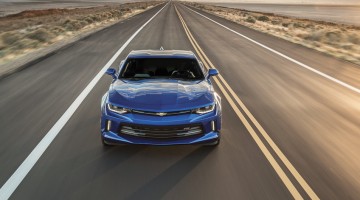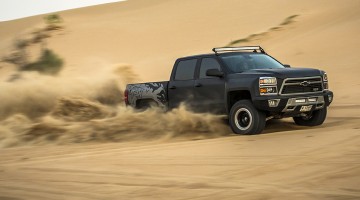Now in its ninth generation, the Chevrolet Malibu is sleeker than ever. And given the success of its predecessors, the mid-size saloon has some big shoes to fill
| Engine | Power | Torque | 0-100kph | Top speed | Weight | Basic price |
|---|---|---|---|---|---|---|
| Inline 4cyl, 2490cc | 183bhp @ 6000rpm | 250Nm (184lb ft) @ 4000rpm | N/A | N/A | 1471kg (124bhp/ton) | $25,800 |
—
| Ergonomic cabin design, good ride comfort | |
| Not particularly fuel efficient, lacks excitement |
—
Given how popular the Lumina was in the Middle East during its day, the new Chevrolet Malibu has no small task fitting into those big shoes as Chevrolet’s new mass-market saloon. Unfairly, it could be said: the Lumina was decidedly Australian, and the Malibu is definitely American. It would also be quite difficult to fit a Corvette V8 into the Malibu as the Lumina SS did – and which the Holden Commodore still does. Indeed, even though they are roughly similar in overall size at 4.92m long and close to 1,500kg, they are quite different in focus. Whereas down under was about the driving experience, the Malibu is about ride comfort on a budget, and in that regard, the Malibu does pretty well.
Tell us more about that new design and cabin layout…
On the road, the seats are comfy enough to pack 500km days with minimal problems. In a Middle Eastern climate, the ventilated seats – part of the top of the range LTZ spec on our test model alongside a full-leather interior, auto-parking, and self-dimming HID headlights – work very well at keeping you cool and dry. And rather than offering a range of interior ‘ambient lighting’ options, Chevrolet has focused on an ergonomic cabin design that places all controls right where you expect them. Top marks.
Well, almost. Traction control (in a Malibu really?), side traffic alerts and self-parking controls are, quite uncomfortably, tucked right in front of the gear lever. Not the easiest of places to find them. Oh, and the ‘American’ side of the Malibu? Everything is an alert, an alarm, or a call to emergency action. Traffic is a little bit dense and you happen to approach the car in front of you in a menacing tone? Lights go off, alarm sounds, radio stops. Back slowly out of a supermarket parking spot? “Help! Help! Help! There is a car coming at 4kph from your right side!” I am not saying these alerts are a bad thing – they’ve not become industry standard for nothing – but please, calibrate.
Perhaps the biggest issue is the six-speed automatic gearbox, the changes of which are smooth if not particularly snappy. However, to select gears manually, you have to use a rocker switch mounted on top of the gear lever itself. I do wonder what the engineers were thinking. This, perhaps:
“Devin, we are done with the cabin”
“Nice. But what about the manual gear change?”
“…oops…”
“Ok, don’t worry, let’s put a toggle switch on top of the gear lever”
“Won’t that be confusing and difficult to use?”
“Nah”
Fortunately you can forget this setup quickly since the ride quality is bliss, floating rather than crashing across abrasive tarmac while solid sound deadening keeps the mechanical, four-cylinder engine rumble and wing noise nicely at bay. I’m also impressed that at this price point – $19K as standard, or $30K as tested – the Malibu even includes lane assist. Seriously, those 500km fly by…
How does it drive?
In terms of practicality, there are a couple of things that deserve a mention. One is the boot – it’s huge – another is rear-mounted AC 250V plug socket, and another still are the rear seats, which are very comfortable and roomy but also fold down completely flat for maximum load capacity. My critical mind can find little wrong with the infotainment system either: all 12 Bose speakers do a really good job, scrolling through the sub-menus via touchscreen is logical, fast, responsive, simple and efficient, and the system also remembers your latest settings. It even has iOS/Android CarPlay for maximum connectivity.
Which brings us to the actual drive, and as a practical, roomy, mid-sized mainstream American saloon, ‘excitement’ isn’t top priority. The steering is soft, fast and responsive enough – just about – but a bit more feel wouldn’t go amiss. Our LTZ after all comes equipped with a 2.5-litre four-cylinder capable of producing a solid if unspectacular 183bhp and 184lb ft of torque, so don’t expect electrifying acceleration. It’s also surprisingly thirsty: Chevrolet claims a 7l/100km, but we struggled to get the Malibu under 8.8. Plenty of other vehicles of this size and girth manage a much lower figure.
Overall verdict?
Let’s be honest though, when you consider a Malibu, it’s a matter of value over price. For the Malibu, the value is quite high for your $19,000 – $30,000. True, not the most exciting of models and not quite a Lumina SS. I doubt Chevrolet’s new mass-market saloon need worry about its popularity though.
Enjoy our Chevrolet Malibu LTZ test drive?
You can find more Chevrolet stories HERE, and more of our Car Reviews HERE
- Technical specifications available on page 2






